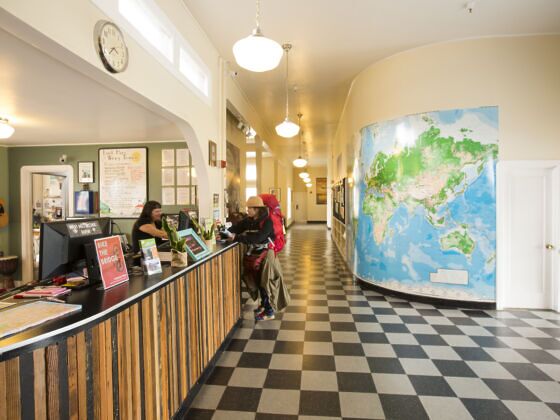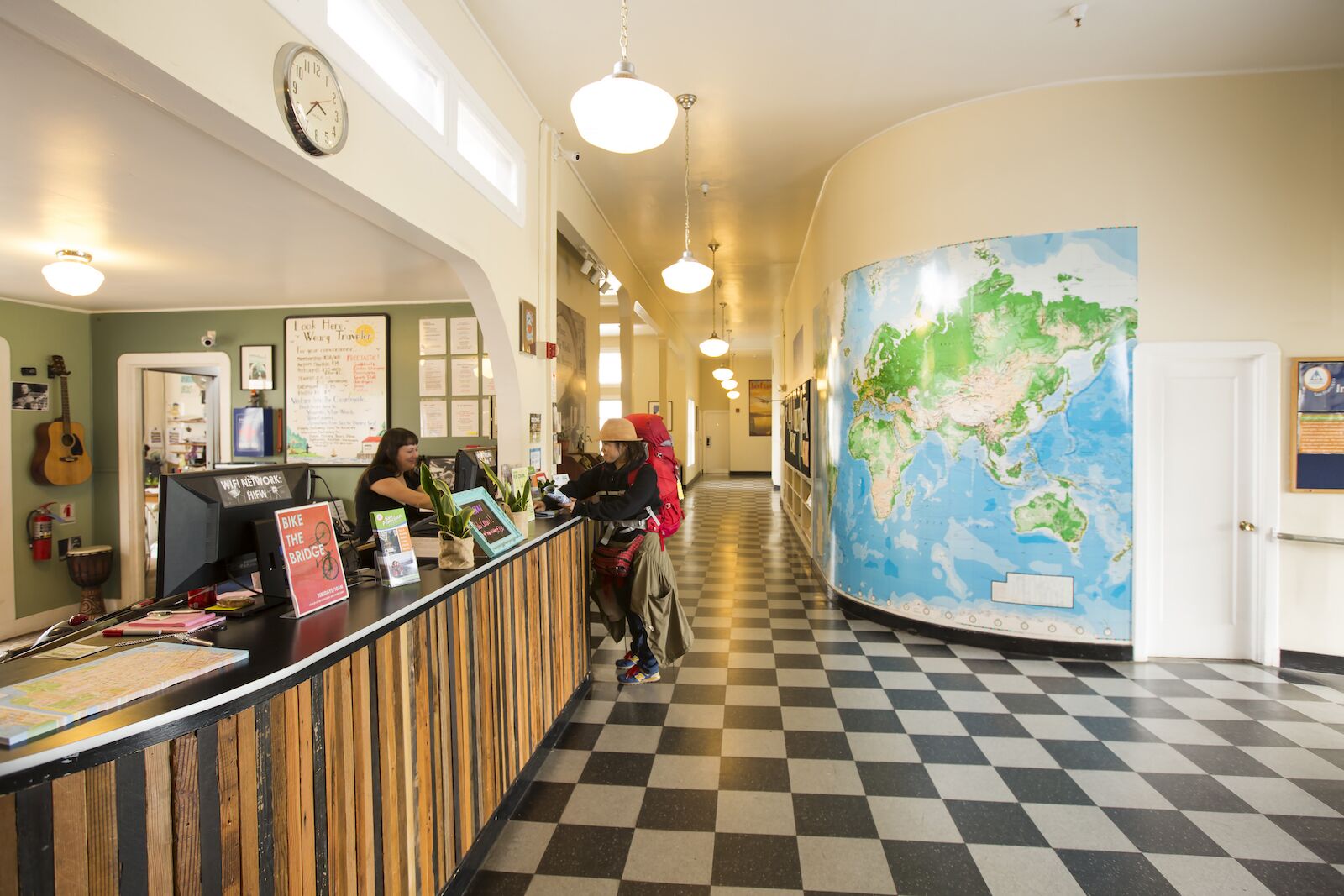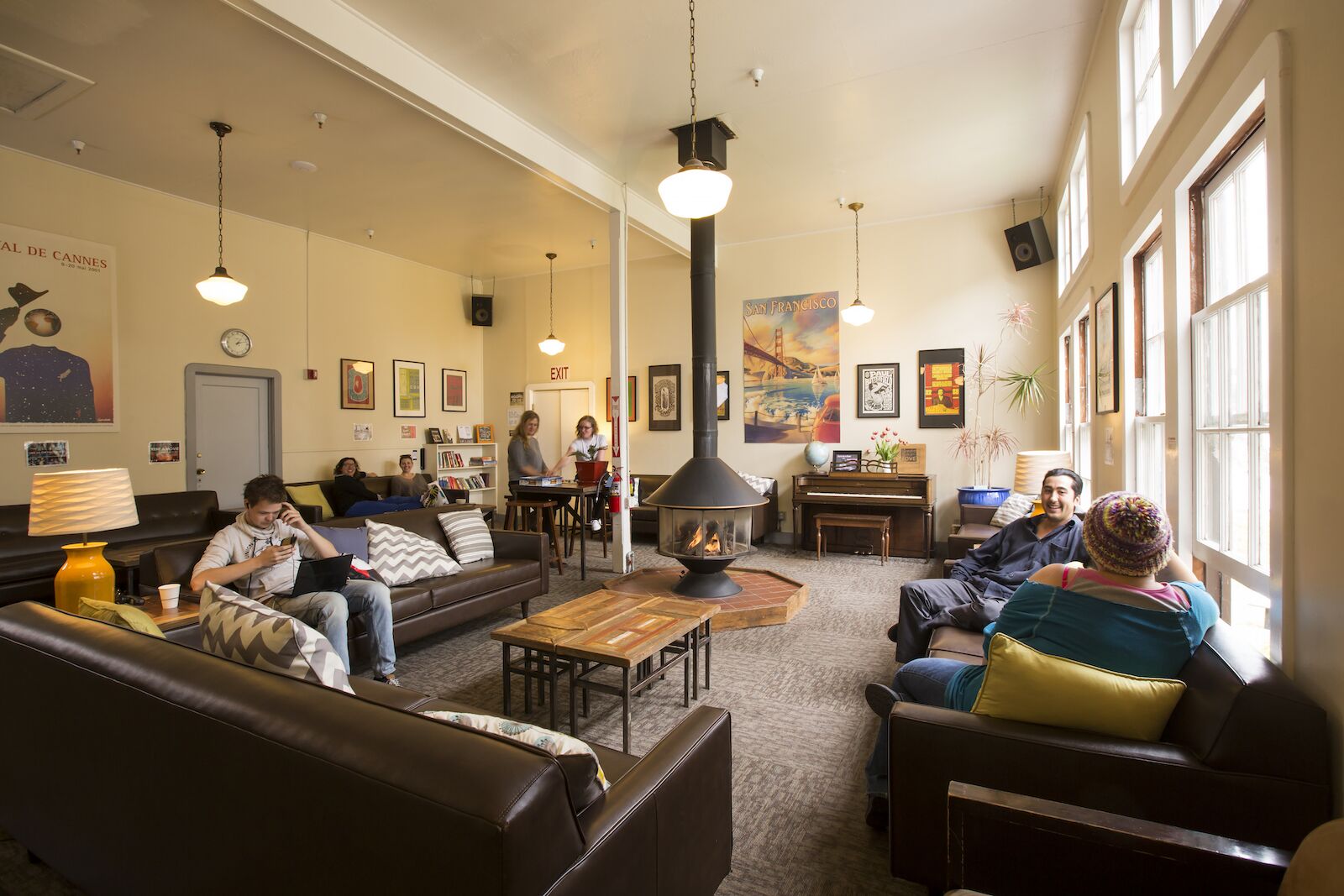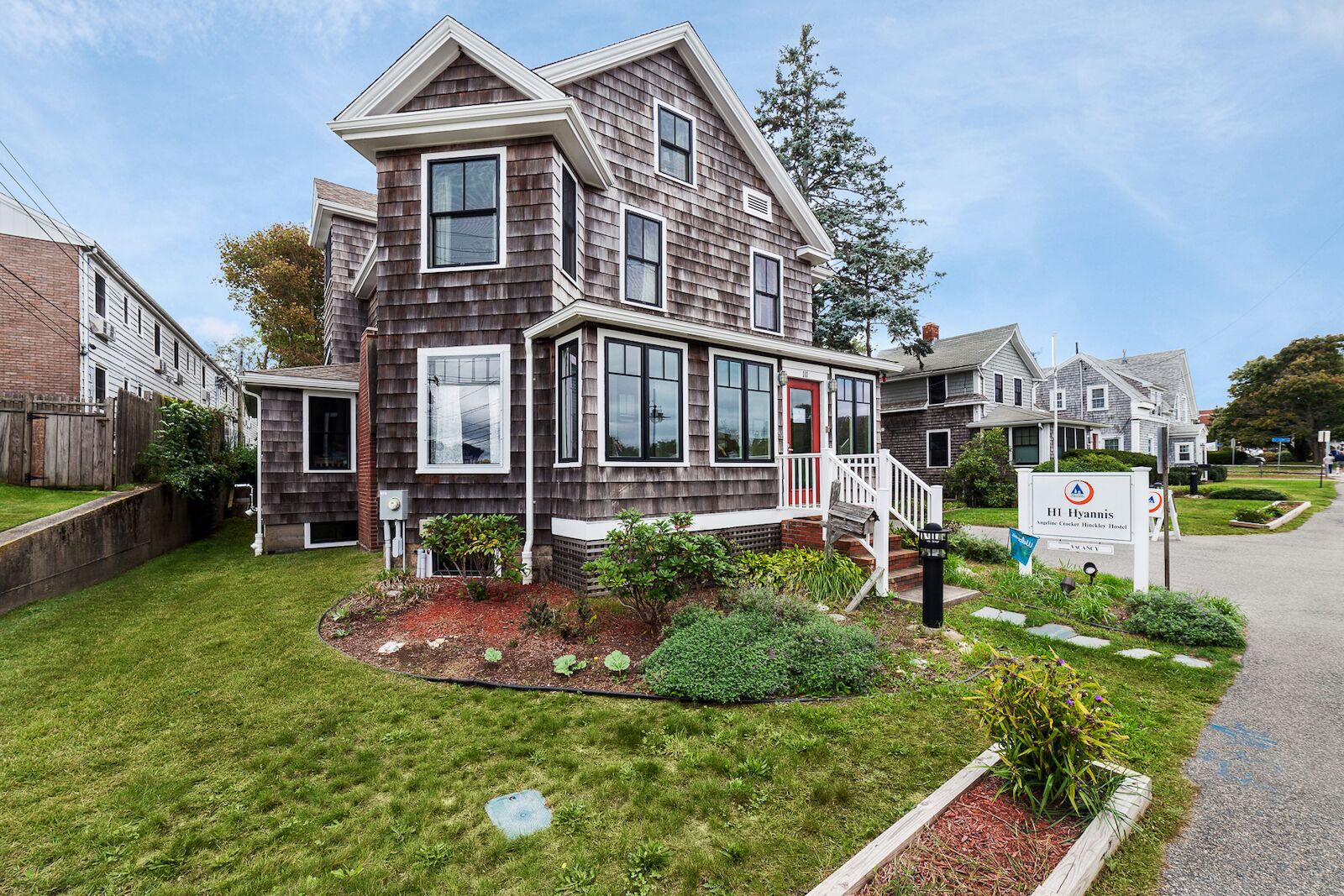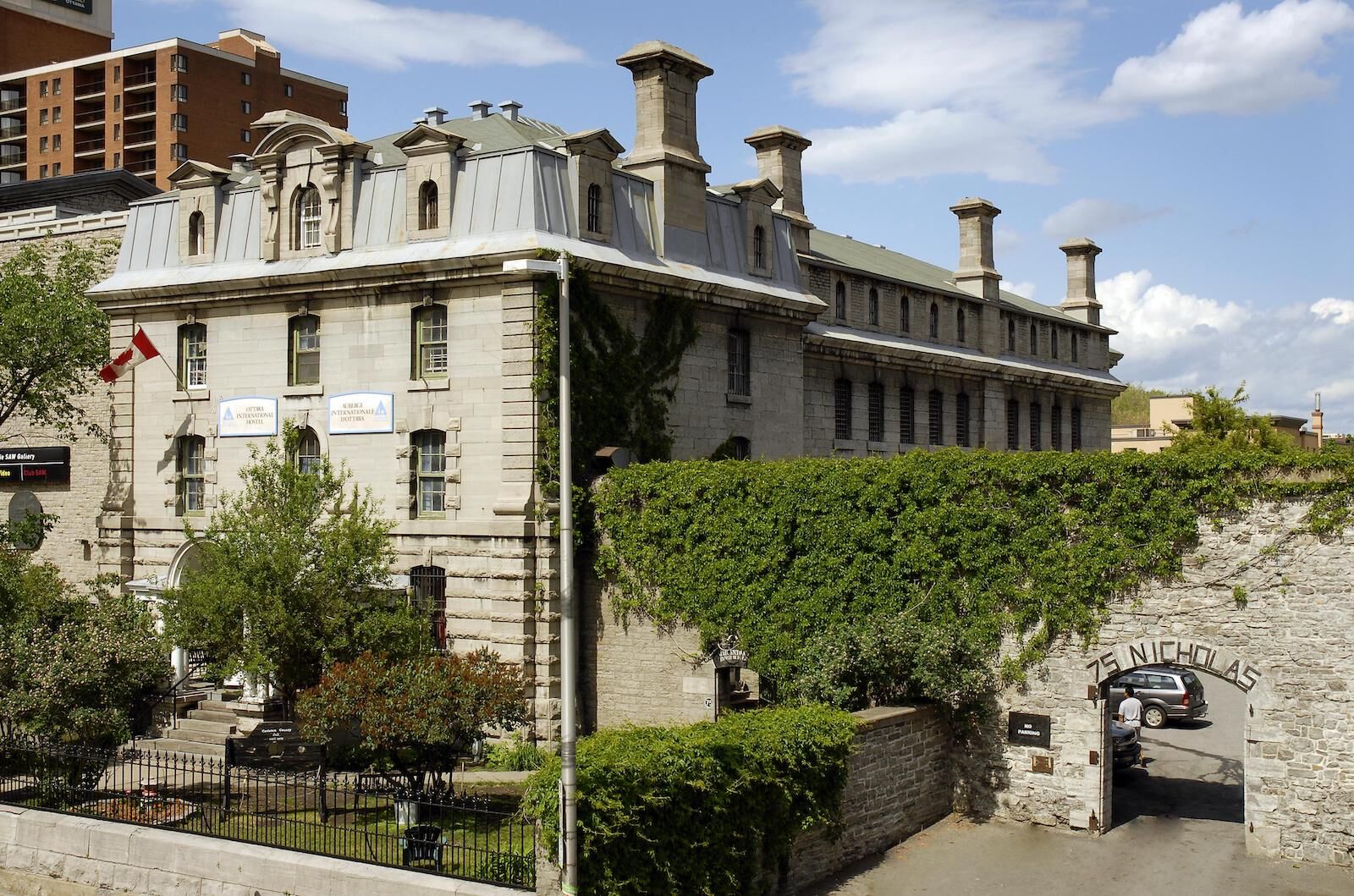We hope you love the spaces we recommend! Just so you know, Matador may collect a small commission from the links on this page if you decide to book a stay.
“Where In The World Are You Sleeping Tonight?” This very query, part of an artistic collage, greets travelers checking into the Hostelling International Fisherman’s Wharf in San Francisco. It’s more than just a rhetorical question. It’s a hint of things to come, foreshadowing that these accommodations are anything but ordinary.
